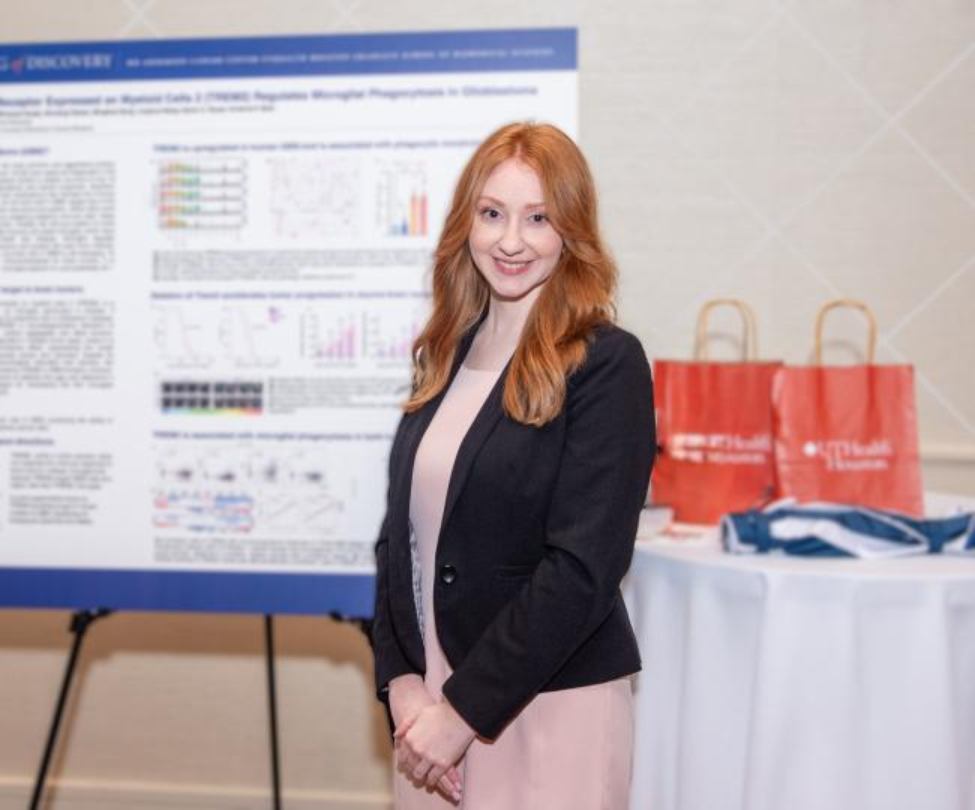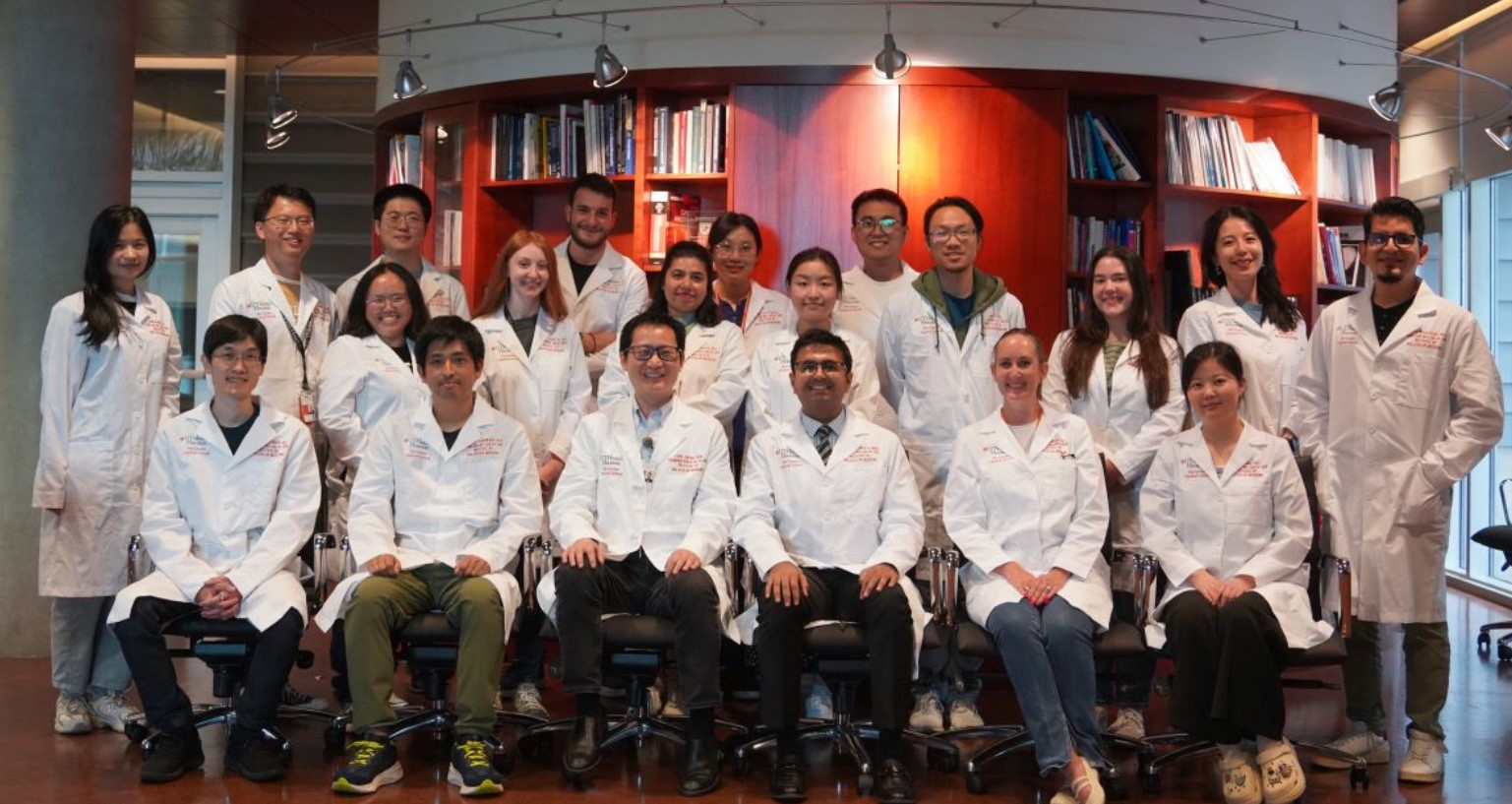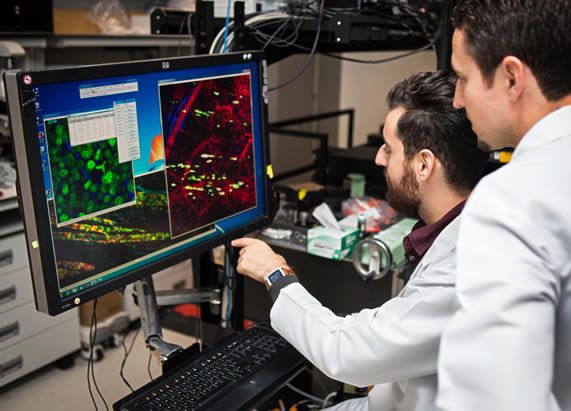Mekenzie Peshoff explores brain tumor immunology through prestigious NIH fellowship
August 25, 2025 By: Sarah Herzog, PhD/The University of Texas MD Anderson Cancer Center UTHealth Graduate School of Biomedical Sciences


For fifth-year Neuroscience and Cancer Biology PhD student Mekenzie Peshoff, research isn’t just about discovery — it’s about direction. With support from a competitive National Institutes of Health (NIH) F31 fellowship, she’s studying how a key receptor on immune cells, TREM2, may influence the development and growth of gliomas. Peshoff provided valuable insight about her project’s potential impact, how she approached the demanding application process, and the lessons she’s learned along the way.
Peshoff chose to have two advisors to enhance her project: Long-Jun Wu, PhD, and Louise McCullough, MD, PhD. She leverages Wu's expertise in microglial physiology and in vivo imaging, with McCullough's clinical insights and expertise in neuroinflammation, to ensure her doctoral project is at the cutting edge of glioma research.
Fellowship: NIH F31 (National Institute of Neurological Disorders and Stroke: NINDS Institute) - “Understanding the role of triggering receptor on myeloid cells 2 (TREM2) on microglia and macrophages across glioma progression”
Opportunity details: PA-25-422: Ruth L. Kirschstein National Research Service Award (NRSA) Individual Predoctoral Fellowship (Parent F31). The F31 NIH fellowship is aimed at supporting PhD candidates conducting dissertation research in biomedical sciences.
Selecting the right fellowship path: laying the foundation for postdoc work
With plans to pursue a postdoc, Peshoff was eligible for both the F31 and F99/K00 NIH funding opportunities.”. She chose the F31 as it gave her more flexibility in selecting a post-doctoral research topic should she choose to change her focus area after graduation.
Peshoff’s fellowship explores how TREM2 expression in different cell types and disease stages contributes to the maintenance of gliomas. This research will identify which genetic subtypes of brain cancer may respond to TREM2 modulation, and which immune populations may be most attractive to target.
Behind the grant: advice and insights
Kenzie found the scope and grantsmanship requirements of pursuing an F award to be the most challenging parts of her submission. At over 80 pages, NIH fellowship submissions are a herculean effort. She recommends speaking with senior students with an F31 to clarify instructions and content. “Don’t be afraid to ask to read someone’s grant! It’s helpful to see the components of a successful application, and then place your own research in that context.”
“My advice is to tailor every part of the application to the funding opportunity. You could be doing great research, but if it doesn’t meet the goals of the fellowship or the priorities of the institute, your grant will not score well. Use each sentence of your application to convince reviewers that your project is significant, feasible, and will contribute to your development as a scientist.”
Career impact: why early funding matters
Peshoff is excited for the opportunities that will be available to her with a successful fellowship application on her academic record.
“Establishing a record of securing independent funding early in my career helps me be competitive for future opportunities. Publications and grants are the currency of academia, so the sooner you’re in the cycle of getting one to fuel the other, the better!”

Peshoff standing fifth from left with all of her lab mates in the Wu lab.







